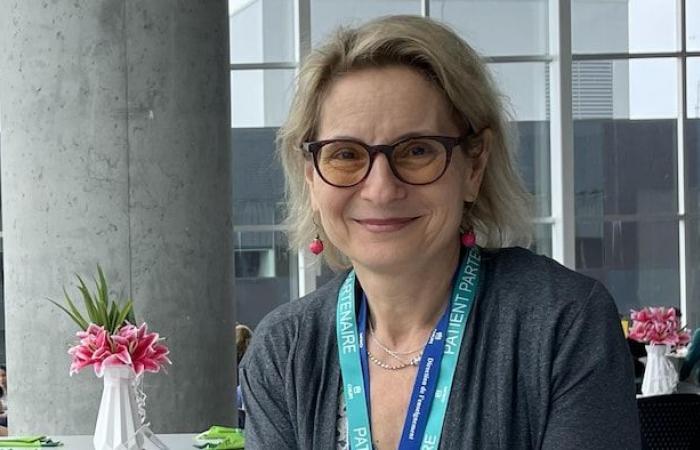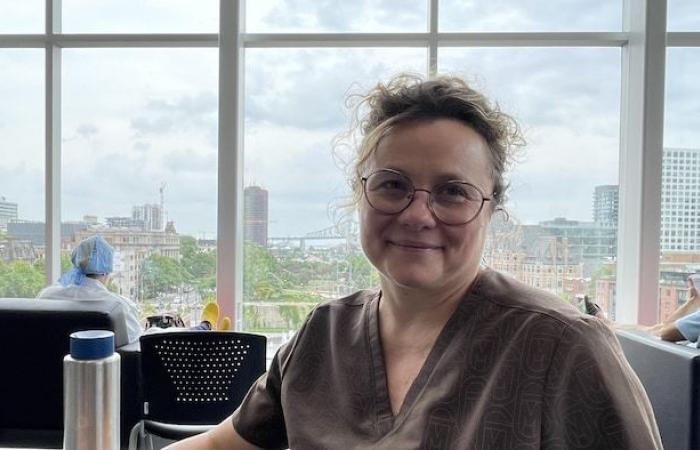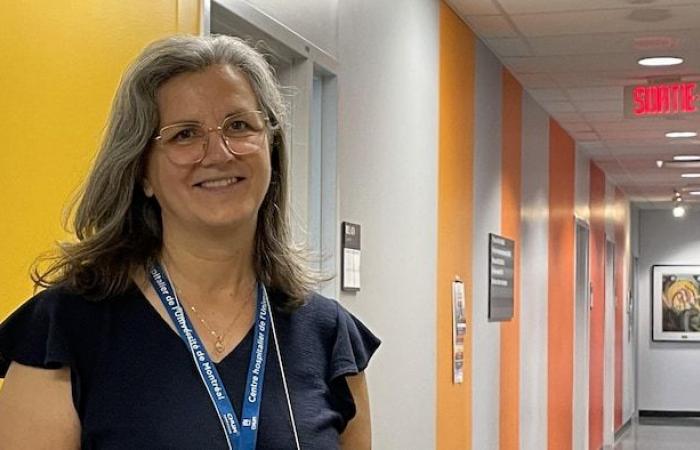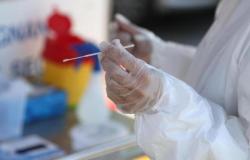One in four Canadians will suffer from liver disease in their lifetime, according to the Canadian Liver Foundation. It is one of the ten leading causes of death in the country. In Quebec, the wait for a liver transplant, sometimes the only possible treatment, is around 200 days on average.
To get through this period more calmly, a project calling on “patient partners” that emerged at the University of Montreal Hospital Center (CHUM) could serve as a model.
Johanne Tétrault Lassonde is one of those former patients who have had a transplant and who offers their time to support other people who are waiting for theirs.
years ago, I was yellow, I had yellow eyes, I had lost weight, I was tired. It didn’t work! I had autoimmune hepatitis. It was my immune system that turned against me”,”text”:”At the age of 30, I was yellow, I had yellow eyes, I had lost weight, I was tired. It didn’t work! I had autoimmune hepatitis. It was my immune system that turned against me”}}”>At the age of 30, I was yellow, I had yellow eyes, I had lost weight, I was tired. It didn’t work! I had autoimmune hepatitis. It was my immune system that turned against me
explains Ms. Tétrault Lassonde, now 68 years old.
She was quickly taken care of after the discovery of her liver disease. Thanks to the care she received, she was able to pursue her career as a teacher and, later, as a director. His liver held up until he was 57 years old.
At that time, my doctor told me that I had to do a transplant because everything was going wrong. I was transplanted the year that followed
she says.
Eleven years later, radiant and energetic, Johanne Tétrault Lassonde is proof that it is possible to survive a liver transplant.
CHUM and I saw a flyer that said: “We are looking for patient partners”. I said to myself that it was for me!”,”text”:”In 2017, I was at the CHUM and I saw a flyer that said: “We are looking for patient partners”. I told myself it was for me!”}}”>In 2017, I was at CHUM and I saw a flyer that said, “We’re looking for patient partners.” I told myself it was for me!
she affirms with conviction.
If I can do something to help people who are going through the same journey as mine, if I can help them get through this, to give them hope, I’m going for it!
She is not the only one to volunteer her time to facilitate patients’ care journey. At CHUMthere are around a hundred former patients involved in different care units, whether as companions for patients with breast or prostate cancer, or with those living with diabetes or sclerosis. plates.
Connected Transplant-Action
Public health physician and researcher Marie-Pascale Pomey has pushed the role of patient partners even further by calling on them throughout the liver transplant process and even after, thanks to the Connected Transplant-Action project.
The project was also implemented under the watchful eye of a patient partner, Fernand Duford.
This is no ordinary side dish! It’s a six-month involvement before the transplant and up to 12 months after, and we, the patient partners, will communicate with our patients every month.
Open in full screen mode
Public health doctor and researcher Marie-Pascale Pomey leads the Transplant-connected action project.
Photo: Radio-Canada / Karine Mateu
As part of this project, six patient partners were recruited and trained and they are part of the care team alongside doctors, nurses or nutritionists. This makes it possible to offer structured and complete support, explains Marie-Pascal Pomey.
: it’s having a person to whom they can tell everything, who is there to help them and who hardly counts their hours”,”text”:”We think that with this project, we will revolutionize the the way to do. Before, patients were left to their own devices, very alone, and their health deteriorated, they had to be hospitalized and transplanted. Now, we should avoid catastrophic hospitalizations. And, for patients, it’s a safety net: it’s having a person to whom they can tell everything, who is there to help them and who doesn’t count their hours or almost”}}”>We think that with this project, we will revolutionize the way things are done. Before, patients were left to their own devices, very alone, and their health deteriorated, they had to be hospitalized and transplanted. Now, we should avoid catastrophic hospitalizations. And, for patients, it’s a safety net: it’s having a person to whom they can tell everything, who is there to help them and who doesn’t count their hours or almost
she says.
The Connected Transplant-Action project also has a technological aspect. Scales, blood pressure monitors and glucometers, among others, are given to patients. The collected data is then sent in real time from the home to the clinical team.
An innovation that is not easy to implement in the Quebec health system, adds the doctor. It is excessively complicated in a system which rightly wants to preserve data security, but this means that we do not yet have the know-how that would make it simpler. So, we are truly pioneers.
Liver diseases on the rise
Involved in the Connected Transplant-Action project, hepatologist Catherine Vincent recognizes that the long wait for a transplant is anxiety-provoking and therefore appreciates the support of patient partners.
days, but it could be two years! The accompanying patients experienced it in their flesh, in their lives. So, it brings a realistic perspective that we, doctors, cannot provide. We can tell them that things will go well, but I haven’t experienced it, I don’t have that credibility”,”text”:”The median waiting period is 185 days, but that maybe two years! The accompanying patients experienced it in their flesh, in their lives. So, it brings a realistic perspective that we, doctors, cannot provide. We can tell them that things will go well, but I haven’t experienced it, I don’t have that credibility”}}”>The median waiting period is 185 days, but it can be two years! The accompanying patients experienced it in their flesh, in their lives. So, it brings a realistic perspective that we, doctors, cannot provide. We can tell them that things will go well, but I haven’t experienced it, I don’t have that credibility.
admits the liver disease specialist.
Open in full screen mode
Hepatologist Catherine Vincent participates in the Transplant-Action Connected project which highlights the experience of patient partners.
Photo: Radio-Canada / Karine Mateu
Dr. Vincent also sees an increase in cases of liver disease in younger and younger patients.
The epidemic of obesity in childhood and adolescence and the trivialization of alcohol consumption are risk factors that affect the liver, and it resists this very poorly.
notes the specialist doctor.
Our lifestyle habits cause dramatic situations, which I did not see when I started my practice, where young people in their late twenties or early thirties are cirrhotic due to obesity and alcohol.
Towards enhancing patient partners
THE CHUM is a step ahead of other hospitals in terms of the place given to partner patients, underlines clinical nurse specialist in liver transplantation Rosanda Polegubic. For years, she has been matching new and old patients.
It’s a culture that is already established in our team, she says with pride. I organize the meetings and I make the perfect match according to the diagnosis. People who have liver disease due to alcohol consumption, I will put them in touch with patient partners who have already been there. Patients feel much more understood in what they are experiencing.
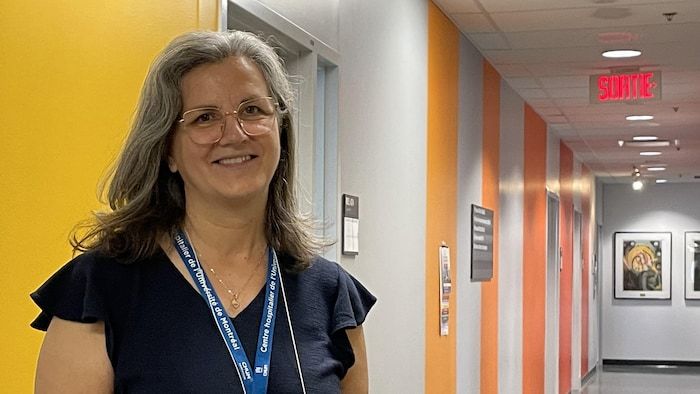
Open in full screen mode
Rosanda Polegubic is a clinical nurse specializing in liver transplantation at the CHUM.
Photo: Radio-Canada / Karine Mateu
Thus, the place given to the experience of former patients differs from one health center to another and, throughout Quebec, it is quite recent, notes researcher Marie-Pascale Pomey. On the other hand, over the last five years, there has been more openness.
Before, we weren’t very comfortable working with patient partners. We liked them in committees, in meetings, it wasn’t too disturbing. But in the care it was more delicate, in case they said something that was not necessary and because of the personal data
she says.
We had to work with the teams to clearly mark in which square the accompanying patients work, to be really sure that there is no overflow. But what we see is that patient partners have a very good understanding of the limits of their role, they have no interest in replacing professionals.
underlines the doctor.
What gives meaning to their intervention is what I call the heart-to-heart relationship, which no one can have except someone who has experienced the same thing.

